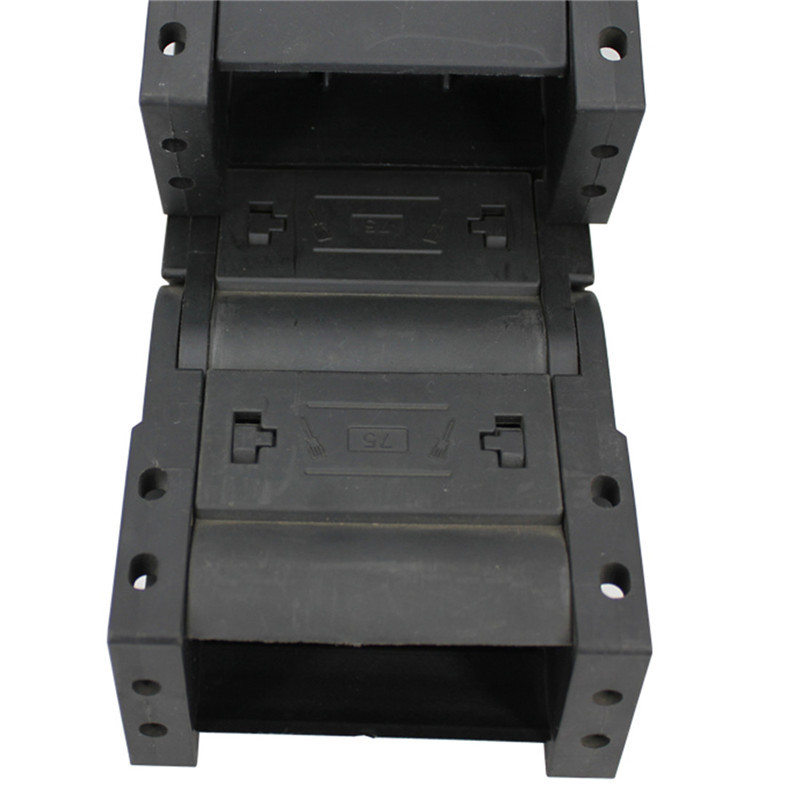cable drag chain size chart
Understanding the Cable Drag Chain Size Chart A Comprehensive Guide
In today's fast-paced industrial environment, efficiency and organization are paramount. One often overlooked component that plays a crucial role in the smooth operation of machinery is the cable drag chain, also known as a cable carrier. These chains protect and manage cables, hoses, and lines that power various equipment, and selecting the correct size is essential for optimal performance. In this article, we will delve into the importance of cable drag chains and how to interpret a size chart effectively.
What is a Cable Drag Chain?
A cable drag chain is a mechanical device used to guide and protect moving cables and hoses in various applications, such as CNC machines, robotics, and conveyor systems. These chains come in various sizes and designs, ensuring that cables remain untangled, organized, and free from wear and tear. Without an appropriate drag chain, cables can become damaged, leading to costly downtime and repairs.
Why Size Matters
Selecting the correct size for a cable drag chain is critical for a number of reasons
1. Protection A properly sized drag chain provides adequate protection against abrasion and mechanical stress. 2. Mobility An appropriately sized chain allows for smooth movement of cables and hoses, reducing wear over time. 3. Capacity Overloading a chain can lead to premature failure, while an undersized chain may not accommodate all required cables.
Interpreting the Size Chart
Cable drag chain size charts are essential tools for selecting the right drag chain for your needs. Here’s a breakdown of how to read the size chart effectively
1. Chain Size The first column typically lists various chain sizes denoted by a specific code or dimensions, such as the inner width and height (I.D. and O.D.). 2. Inner Width The width of the channel where the cables will reside is critical. This measurement dictates how many cables the chain can accommodate side by side.
3. Chain Height This refers to the height of the chain, important for determining the overall space required and protecting different types of cables or hoses.
cable drag chain size chart

4. Cable Area Most charts will provide information on the maximum area for cables and hoses the chain can handle. This area is usually indicated in square millimeters or inches and includes factors like cable insulation thickness.
5. Bend Radius Understanding the minimum bend radius is essential, especially for flexible cables. This measurement ensures that cables are not subjected to tight bends, which can cause damage over time.
6. Load Capacity Some charts also indicate the load capacity of a specific drag chain model. This is essential when considering the weight of the cables and any external forces the chain may have to withstand during operation.
Best Practices for Selection
When selecting a cable drag chain, always consider the following best practices
- Consult Manufacturer Guidelines Always refer to the manufacturer's specifications to ensure compatibility. - Plan for Future Needs Anticipate any changes or expansions in your system, ensuring the drag chain chosen can accommodate future cable upgrades.
- Consider Environmental Factors Factors such as temperature, moisture, and chemicals can affect cable longevity, so consider drag chains designed for harsh environments.
- Test Before Implementing If possible, conduct a trial run with your selected drag chain to observe its performance in a real-world application.
Conclusion
Selecting the correct cable drag chain is vital for maintaining operational efficiency and prolonging the life of your machinery. By understanding how to interpret the cable drag chain size chart, you can make informed decisions that minimize downtime and enhance productivity. With the right drag chain in place, you ensure that your cables and hoses are adequately protected and managed, allowing your equipment to function seamlessly. Whether you are in manufacturing, robotics, or any other sector utilizing heavy machinery, proper cable management is an investment in your operational success.








